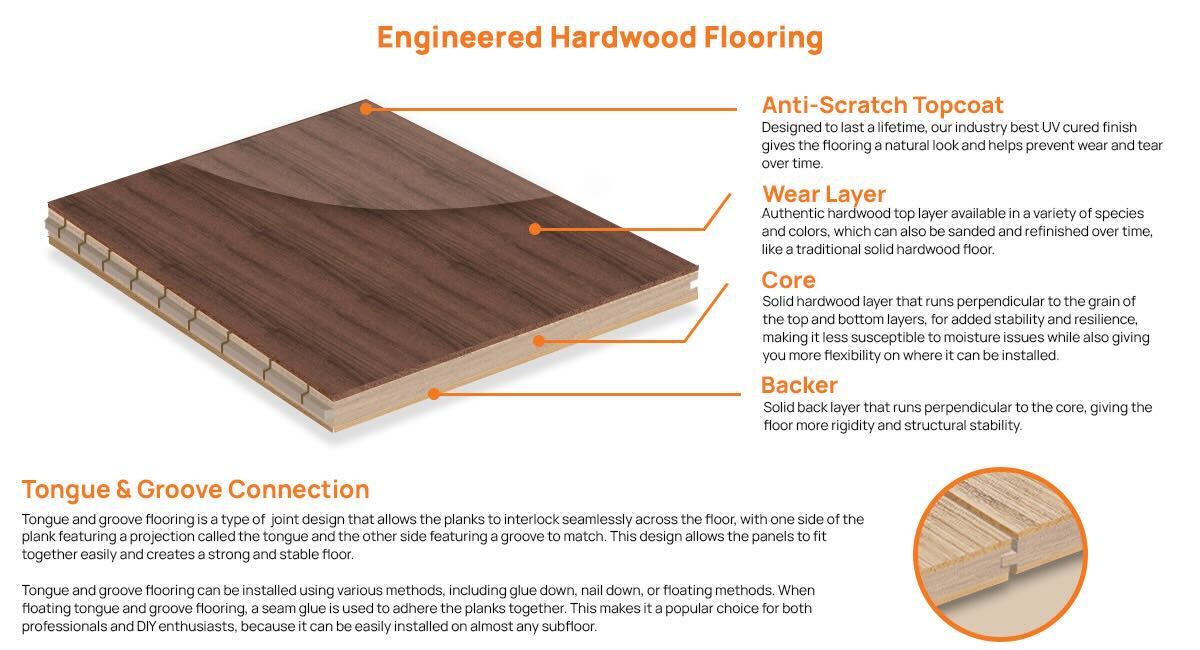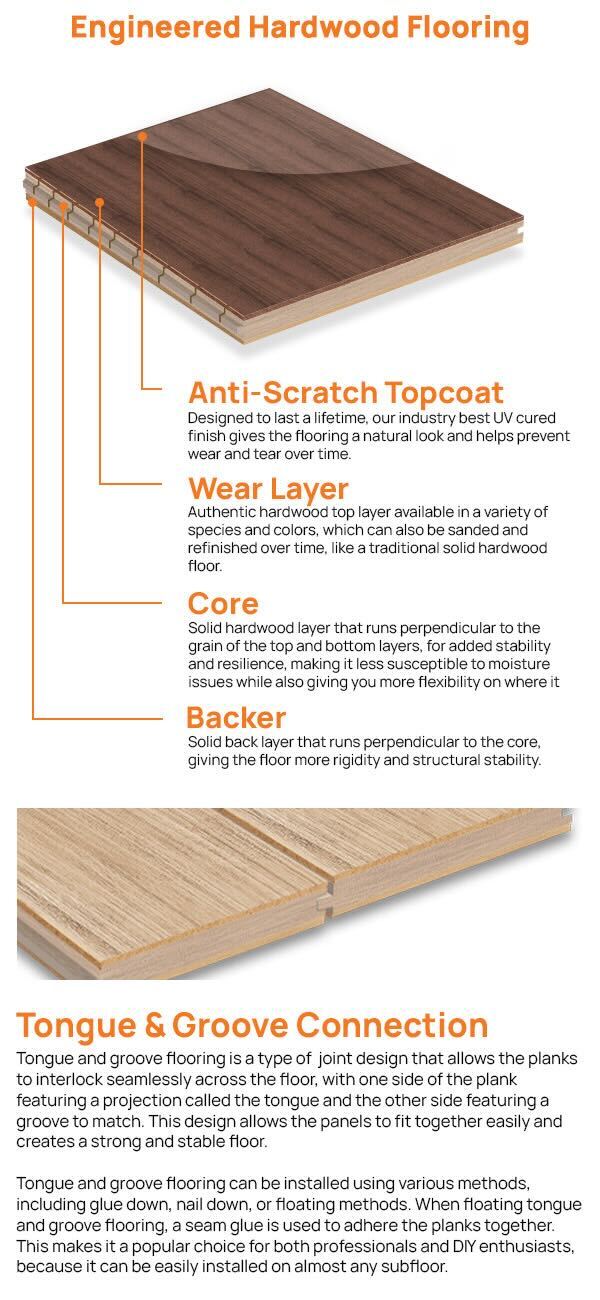- Home /
- Wire Brushed Niseko White Oak Flooring - 7.5"
About Engineered Flooring


Description
This unique white oak adds a touch of vibrance that contrasts its otherwise spectral hues. The wire-brushed texture is great if you're looking for that authentic, classic hardwood feel. Versatile with a timeless aesthetic that works with almost any decor, Niseko adds authenticity to older homes and brings warmth and character to modern decors.
Specifications
- SKU
- HWB-F-0345
- Product Type
- Engineered
- Connection
- Tongue & Groove
- Finish
- UV Cured Polyurethane
- Style
- Wire Brushed
- Color
- Niseko
- Width
- 7.5"
- Length
- 72" (Random Length) Random length flooring is flooring that comes in boxes or cartons made up of varying plank lengths. This gives the floor a natural look and prevents patterns during installation, efficiently maximizing all of the lumber used in milling.
- Thickness
- 3/8"
- Wear Layer
- 1.2mm
- SF Per Box
- 38.86
- Weight/SF
- 2.2 lbs
- Weight/Box
- 85.5 lbs
- Finish Warranty
- 35 Years
- Structural Warranty
- Lifetime
- Maintenance
- Floor Care Guide
Frequently asked questions
What is tongue & groove construction?
Tongue and groove is the type of joint construction on wood flooring planks that allow them to easily fit together. One side of the plank has a projection called the tongue while the other side has a groove to match. The panels are laid flat with each tongue fitting into the groove next to it. This allows the planks to interlock seamlessly across the floor. Tongue and groove flooring can be installed in either a glue down, nail down or floating method. If floating tongue and groove, a seam glue is used to adhere the tongue and groove together.
What is an engineered floor?
Engineered hardwood planks are essentially a sandwich consisting of a specific species of wood on top (generally 1/16” - 1/8”) with a high quality plywood core or high-density fiberboard bottom (HDF). They often come in a click and lock or tongue and groove construction that can be easily floated over your subfloor as well as glued or nailed down. Engineered floors need about 2-3 days to acclimate in the room/home prior to being installed.
What are the benefits of an engineered floor vs a solid floor?
Both types of flooring have their pros and cons, so we always recommend speaking with one of our flooring professionals first to determine what fits your needs and style best. Engineered can be installed both above or below grade as engineered flooring is less susceptible to moisture and expansion, versus solid wood floors which can only be installed above grade as they are one solid piece of wood and can only sustain a certain amount of moisture before expansion and movement becomes an issue. Another benefit to Engineered hardwood is they can be installed in almost any fashion. You can glue or nail both engineered and solid hardwood flooring when it comes time for installation, but you can also float engineered floor over most subfloors (as we discuss later a very DIY friendly and cost effective form of installation). This is because engineered floors often come in a click and lock or tongue and groove construction which allow for easy installation and locking. Solid floors take more time to acclimate as well, which if time is an issue for installation, becomes an important factor. Engineered hardwood takes about 2-3 days of acclimation in your home prior to installation whereas solid is 2-3 weeks.




